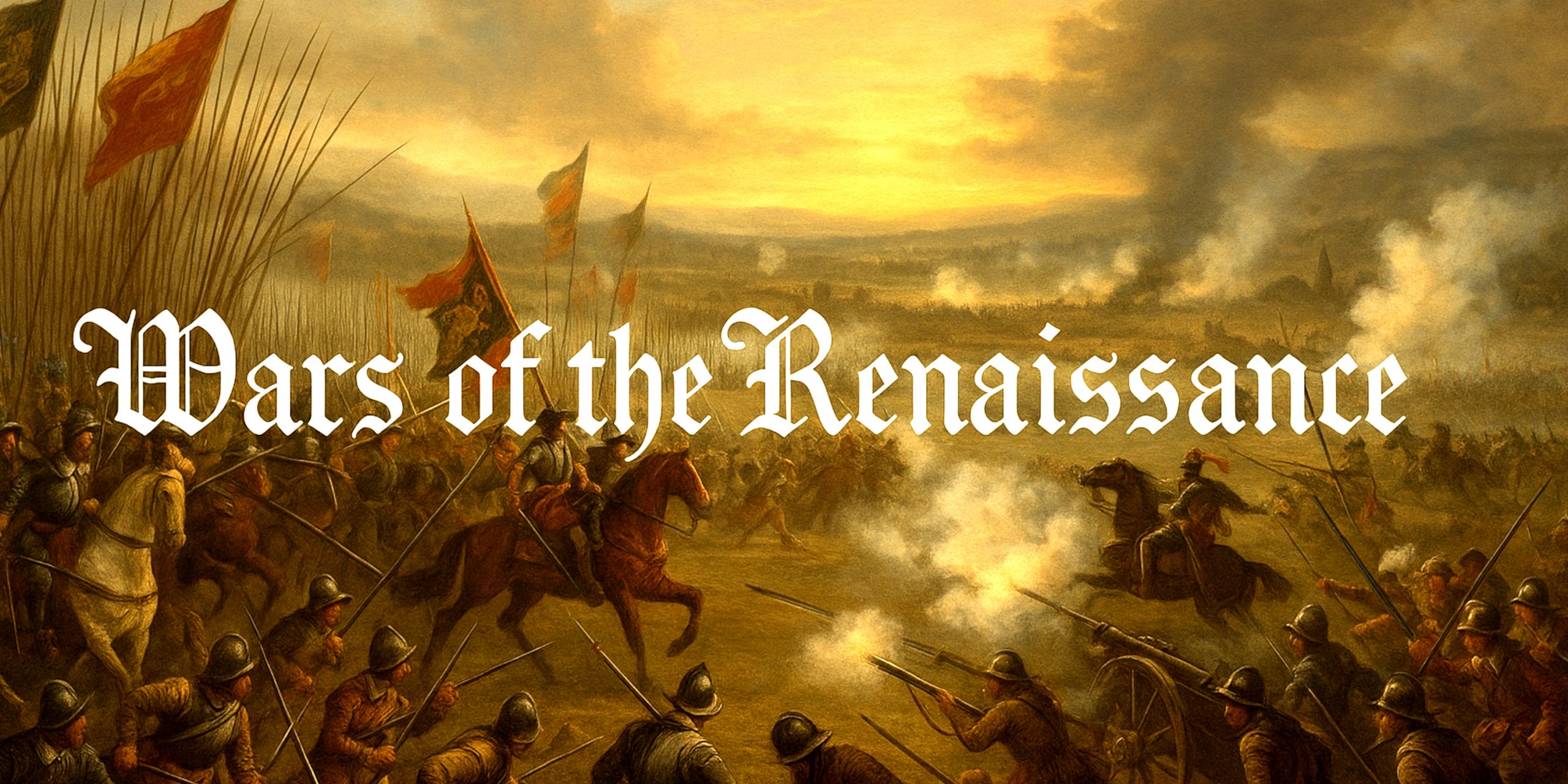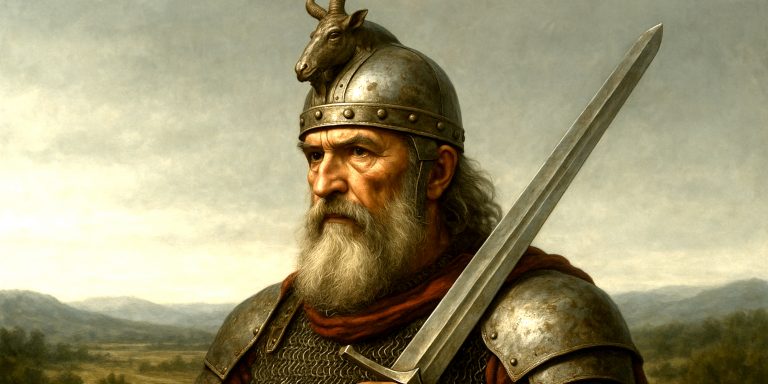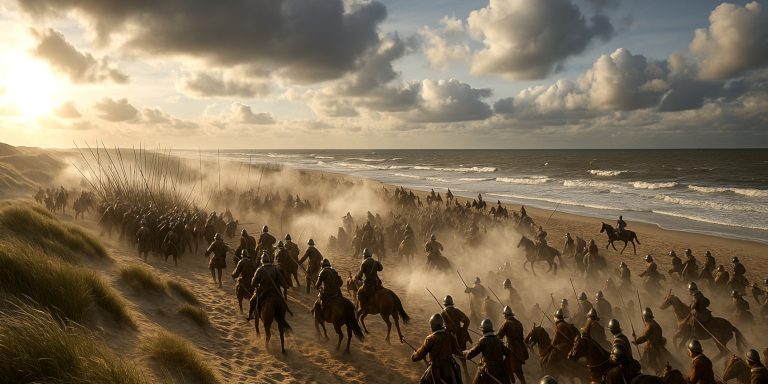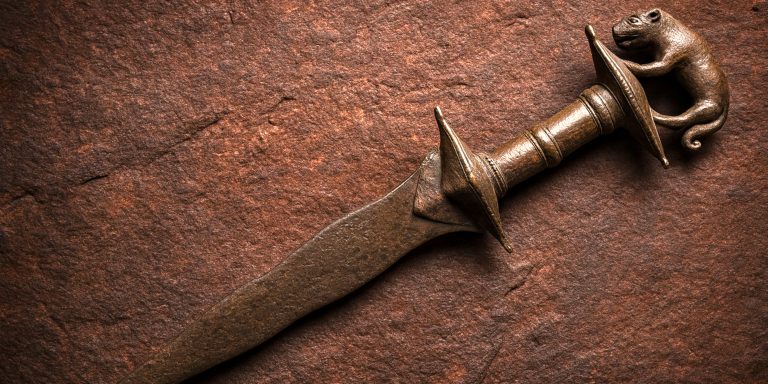
1. The Thirty Years’ War (1618–1648)
Countries Involved:
Holy Roman Empire, Sweden, France, Spain, Denmark, and German principalities.
Commanders:
Gustavus Adolphus, Wallenstein, Count Tilly, Cardinal Richelieu.
Troop Estimates:
Over 2 million fought in total.
Key Battles:
- White Mountain (1620): Imperial victory early in the war.
- Breitenfeld (1631): Gustavus Adolphus’ triumph revived Protestant hopes.
- Lützen (1632): Swedish tactical win, but Gustavus slain.
- Rocroi (1643): French victory marked Spain’s decline.
Weapons and Sword Types:
Muskets, pikes, sabres, schiavonas, rapiers, and field cannon.
Outcome:
Treaty of Westphalia ended the war and recognised state sovereignty.
Legacy:
Ended Europe’s religious wars and reshaped diplomacy.
2. The Great Turkish War (1593–1606)
Countries Involved:
Ottoman Empire vs. Habsburg Monarchy, Holy Roman Empire, Transylvania, Wallachia.
Commanders:
Rudolf II, Sultan Mehmed III, Giorgio Basta.
Troop Estimates:
Up to 200,000 combined.
Key Battles:
- Sisak (1593): Habsburg defence halted Ottoman advance.
- Mezőkeresztes (1596): Ottoman victory but heavy losses.
- Raab (1598): Strategic Habsburg recapture.
Weapons and Sword Types:
Ottoman kilij sabres, yataghans, Habsburg rapiers, pikes, muskets, and cannon.
Outcome:
Treaty of Zsitvatorok halted Ottoman advance.
Legacy:
Marked the turning of Ottoman fortunes in Central Europe.
3. The Anglo-Spanish War (1585–1604)
Countries Involved:
England, Spain, Dutch Republic, and Portugal (under Spanish rule).
Commanders:
Sir Francis Drake, Lord Howard, Duke of Parma, Philip II.
Troop Estimates:
50,000+ troops, over 150 warships.
Key Battles:
- Spanish Armada (1588): English fleet defeated the invasion attempt.
- Cadiz Raid (1596): English sack of a key Spanish port.
- Kinsale (1601): Spanish defeat in Ireland.
Weapons and Sword Types:
Cutlasses, rapiers, boarding pikes, muskets, and naval cannon.
Outcome:
No Spanish invasion; England gained global prestige.
Legacy:
England’s rise as a maritime power.
4. The War of the Holy League (1570–1573)
Countries Involved:
Holy League (Spain, Venice, Papal States) vs. Ottoman Empire.
Commanders:
Don John of Austria, Ali Pasha, Sebastiano Venier.
Troop Estimates:
Around 200,000 (land and sea).
Key Battle:
- Lepanto (1571): Massive naval battle; Holy League victory.
Weapons and Sword Types:
Scimitars, kilijs, rapiers, broadswords, arquebuses, and bombards.
Outcome:
Ottoman fleet destroyed, halting their naval supremacy.
Legacy:
Boosted Christian morale and checked Ottoman expansion westward.
5. The Eighty Years’ War (1568–1648)
Countries Involved:
Dutch Republic vs. Spain.
Commanders:
William the Silent, Duke of Alba, Maurice of Nassau.
Troop Estimates:
Hundreds of thousands over decades.
Key Battles:
- Heiligerlee (1568): Dutch uprising begins.
- Leiden (1574): Dutch resistance triumph.
- Nieuwpoort (1600): Dutch victory against Spain.
- Breda (1625): Iconic Spanish siege victory.
Weapons and Sword Types:
Pikes, muskets, sabres, rapiers, siege cannon.
Outcome:
Dutch independence achieved.
Legacy:
Founded the Dutch Republic, heralding the decline of Spain.
6. The French Wars of Religion (1562–1598)
Countries Involved:
Catholics vs. Huguenots in France.
Commanders:
Henry of Navarre, Duke of Guise, Catherine de’ Medici.
Troop Estimates:
Hundreds of thousands.
Key Battles:
- Wassy (1562): Sparked the conflict.
- Jarnac (1569): Catholic victory.
- Ivry (1590): Henry of Navarre’s decisive triumph.
Weapons and Sword Types:
Rapiers, estocs, pistols, muskets, pikes.
Outcome:
Henry IV’s accession and the Edict of Nantes.
Legacy:
Weakened feudal power and unified France under royal authority.
7. The Livonian War (1558–1583)
Countries Involved:
Russia vs. Sweden, Poland-Lithuania, Denmark-Norway, Livonian Order.
Commanders:
Ivan the Terrible, Stephen Báthory, Erik XIV.
Troop Estimates:
100,000+.
Key Battles:
- Fellin (1560): Russian victory.
- Wenden (1578): Allied victory reversed Russian gains.
- Pskov (1581–82): Polish siege repelled.
Weapons and Sword Types:
Sabres, bardiches, rapiers, arquebuses, and cannon.
Outcome:
Russia expelled from the Baltic.
Legacy:
Shifted northern power to Sweden and Poland.
8. The Italian War of 1551–1559 (Habsburg–Valois War)
Countries Involved:
France vs. Spain, Empire, and England.
Commanders:
Henry II, Philip II, Duke of Alba.
Troop Estimates:
Approx. 100,000.
Key Battles:
- Marciano (1554): Spanish victory in Tuscany.
- St Quentin (1557): Crushing Spanish win.
- Gravelines (1558): Final defeat for France.
Weapons and Sword Types:
Rapiers, pikes, arquebuses, and cannon.
Outcome:
Peace of Cateau-Cambrésis; Spain dominant.
Legacy:
Habsburgs became Europe’s leading dynasty.
9. The Second Schmalkaldic (Augsburg) War (1552–1555)
Countries Involved:
Protestant German princes and France vs. Empire.
Commanders:
Charles V, Maurice of Saxony, Henry II of France.
Troop Estimates:
80,000.
Key Battles:
- Siege of Innsbruck (1552): Protestant advance forced peace.
Weapons and Sword Types:
Halberds, pikes, longswords, rapiers, cannon.
Outcome:
Peace of Augsburg recognised Lutheranism.
Legacy:
Set precedent for religious tolerance in Germany.
10. The Schmalkaldic War (1546–1547)
Countries Involved:
Empire vs. Protestant Schmalkaldic League.
Commanders:
Charles V, Philip of Hesse, Maurice of Saxony.
Troop Estimates:
70,000.
Key Battle:
- Mühlberg (1547): Decisive Imperial victory.
Weapons and Sword Types:
Longswords, pikes, arquebuses, cannon.
Outcome:
Temporary Catholic restoration.
Legacy:
Deepened Protestant resolve.
11. The Italian War of 1536–1538
Countries Involved:
France vs. Empire.
Commanders:
Francis I, Charles V, Duke of Savoy.
Troop Estimates:
70,000.
Key Battles:
- Provence Campaign (1536): French defensive success.
- Nice (1538): Truce signed under papal mediation.
Weapons and Sword Types:
Rapiers, estocs, cannon, pikes.
Outcome:
Truce of Nice.
Legacy:
Prolonged Franco-Habsburg rivalry.
12. The Ottoman–Habsburg Wars (1526–1571)
Countries Involved:
Ottoman Empire vs. Habsburgs and Hungary.
Commanders:
Suleiman the Magnificent, Ferdinand I, John Zápolya.
Troop Estimates:
Up to 250,000.
Key Battles:
- Mohács (1526): Ottomans annihilated Hungarian army.
- Vienna (1529): Failed Ottoman siege.
- Szigetvár (1566): Heroic Hungarian last stand.
Weapons and Sword Types:
Kilijs, scimitars, zweihänders, muskets, cannon.
Outcome:
Hungary divided between Ottoman and Habsburg rule.
Legacy:
Defined Europe’s religious and cultural frontier.
13. The Italian War of 1521–1526
Countries Involved:
France vs. Spain and Empire.
Commanders:
Francis I, Charles V, Antonio de Leyva.
Troop Estimates:
70,000.
Key Battles:
- Bicocca (1522): Spanish victory by entrenched arquebusiers.
- Pavia (1525): Decisive Spanish win; Francis captured.
Weapons and Sword Types:
Pikes, rapiers, arquebuses, estocs.
Outcome:
Spanish dominance in Italy.
Legacy:
Set new standards for infantry and artillery tactics.
14. The War of the Holy League (1511–1514)
Countries Involved:
Papal States, England, Spain, Venice vs. France.
Commanders:
Pope Julius II, Henry VIII, Louis XII.
Troop Estimates:
70,000.
Key Battles:
- Ravenna (1512): Bloody French victory.
- Novara (1513): Swiss and Papal triumph.
Weapons and Sword Types:
Longbows, falchions, pikes, rapiers, hand-gonnes.
Outcome:
French expelled from Italy.
Legacy:
Asserted papal military authority.
15. The War of the League of Cambrai (1508–1516)
Countries Involved:
France, Spain, Empire, Papal States vs. Venice.
Commanders:
Louis XII, Maximilian I, Pope Julius II.
Troop Estimates:
60,000.
Key Battles:
- Agnadello (1509): Crushing French victory over Venice.
- Marignano (1515): Francis I’s triumph against Swiss mercenaries.
Weapons and Sword Types:
Halberds, pikes, early handguns, estocs.
Outcome:
Venice survived through alliances.
Legacy:
Showed the volatility of Renaissance diplomacy.
16. The Italian War of 1499–1504 (War of Naples)
Countries Involved:
France vs. Spain and Naples.
Commanders:
Louis XII, Ferdinand II, Gonzalo de Córdoba, Cesare Borgia.
Troop Estimates:
80,000+.
Key Battles:
- Cerignola (1503): Spanish victory using entrenched musketeers.
- Garigliano (1503): Final French defeat.
Weapons and Sword Types:
Estocs, arming swords, early muskets, cannon.
Outcome:
Spanish control of Naples.
Legacy:
Proved the superiority of disciplined infantry and firearms.
17. The Ottoman–Venetian War (1499–1503)
Countries Involved:
Ottoman Empire vs. Republic of Venice.
Commanders:
Kemal Reis, Antonio Grimani, Bayezid II.
Troop Estimates:
50,000+.
Key Battles:
- Zonchio (1499): First major naval battle with artillery.
- Modon (1500): Ottoman victory secured Greek ports.
Weapons and Sword Types:
Kilijs, cutlasses, bows, naval cannon.
Outcome:
Ottoman victory; Venice lost Aegean strongholds.
Legacy:
Shifted naval power toward the Ottomans.
18. The Italian War of 1494–1498
Countries Involved:
France vs. Italian states and Spain.
Commanders:
Charles VIII, Ferrante II, Ludovico Sforza.
Troop Estimates:
50,000.
Key Battles:
- Fornovo (1495): French retreat but survival.
- Naples (1495): Brief French occupation.
Weapons and Sword Types:
Artillery, pikes, estocs, arming swords.
Outcome:
French invasion failed.
Legacy:
Opened the era of gunpowder warfare in Italy.
19. The Conquest of Granada (1482–1492)
Countries Involved:
Castile and Aragon vs. Emirate of Granada.
Commanders:
Ferdinand II, Isabella I, Boabdil.
Troop Estimates:
60,000 vs. 30,000.
Key Battles:
- Loja (1486): Christian victory.
- Málaga (1487): Siege opened the coast.
- Granada (1492): Final surrender.
Weapons and Sword Types:
Falchions, arming swords, saifs, crossbows.
Outcome:
End of Muslim rule in Iberia.
Legacy:
Launched Spain’s imperial age.
20. The Wars of the Roses (1455–1487)
Countries Involved:
House of Lancaster vs. House of York (England).
Commanders:
Henry Tudor, Richard III, Edward IV, Warwick the Kingmaker.
Troop Estimates:
20,000–40,000 per major battle.
Key Battles:
- Towton (1461): Largest and bloodiest.
- Tewkesbury (1471): Yorkist consolidation.
- Bosworth (1485): Henry Tudor’s final victory.
Weapons and Sword Types:
Longbows, poleaxes, arming swords, bastard swords.
Outcome:
Tudor dynasty established.
Legacy:
Ended feudal civil war and ushered in centralised monarchy.



